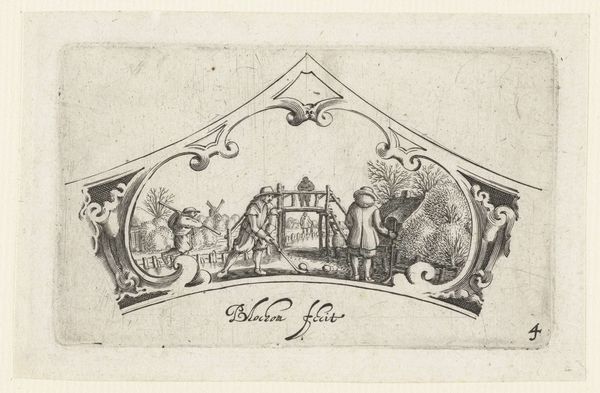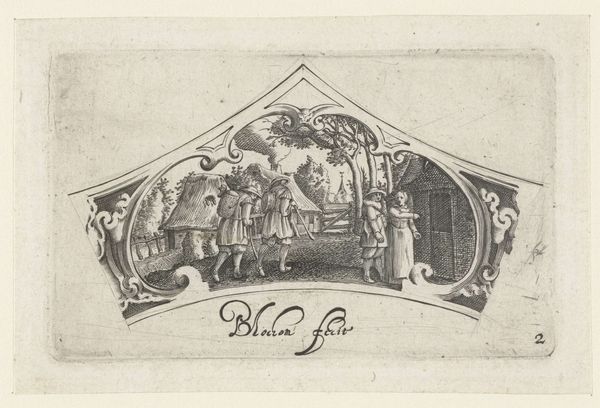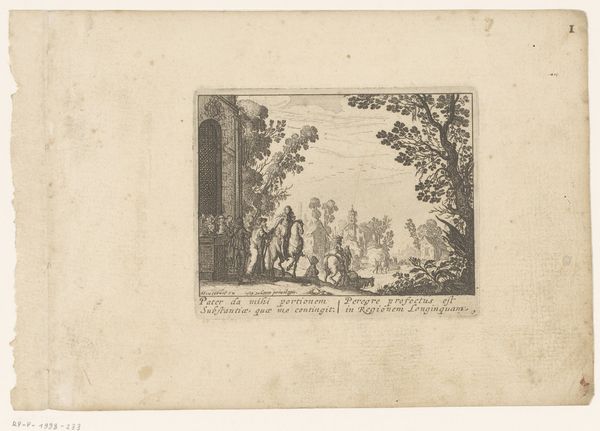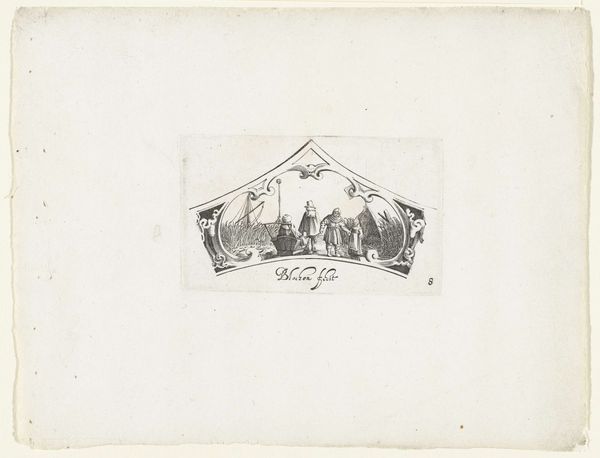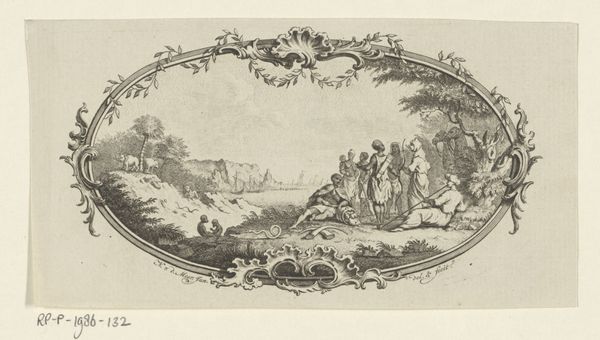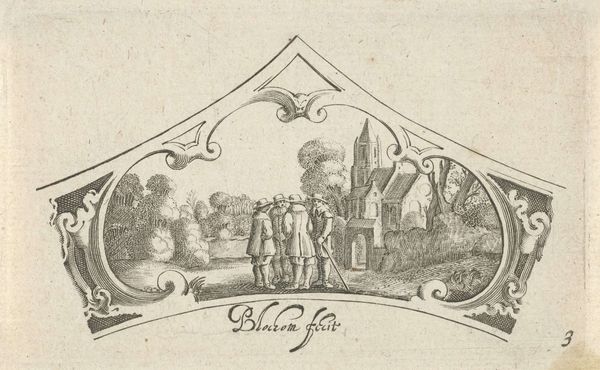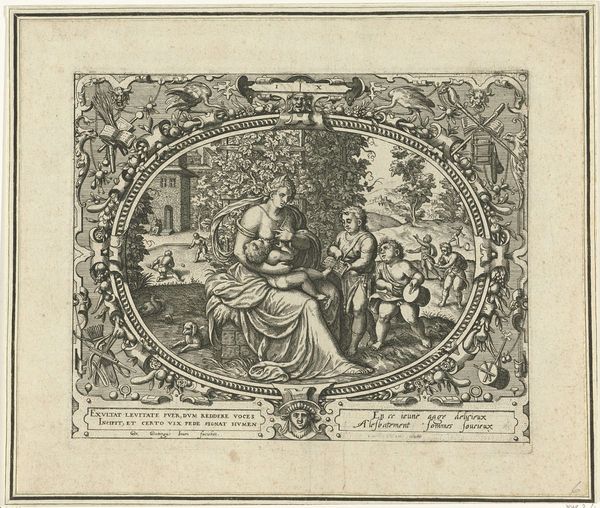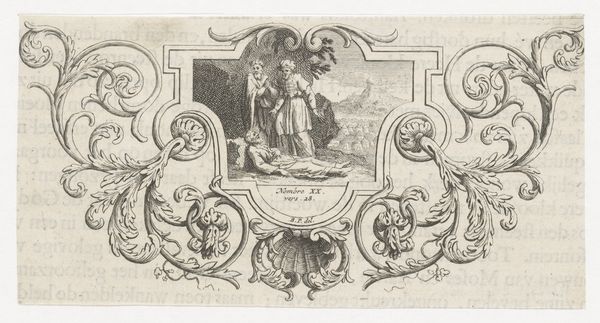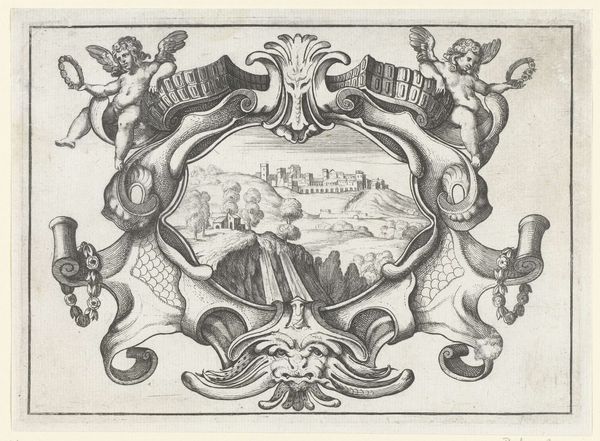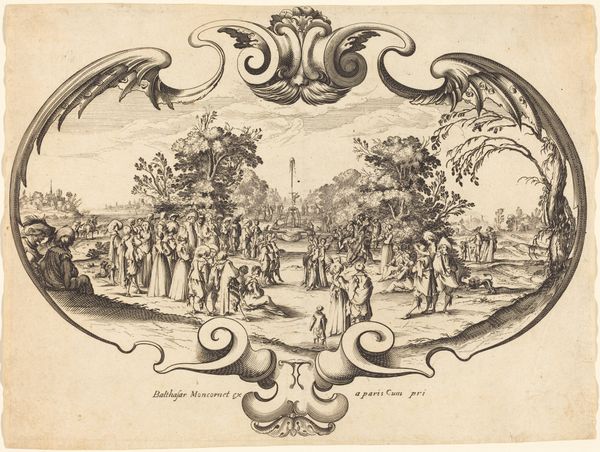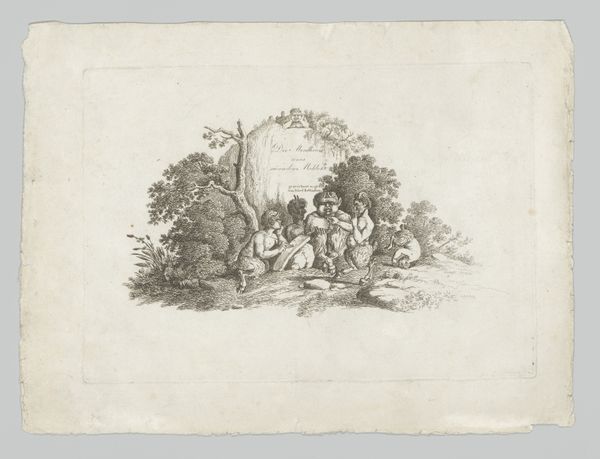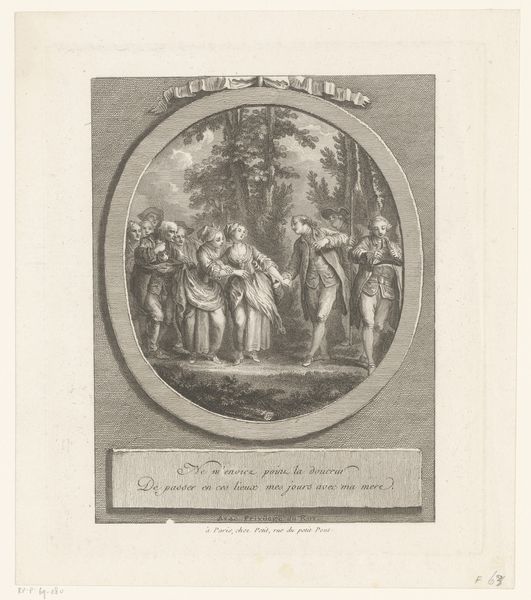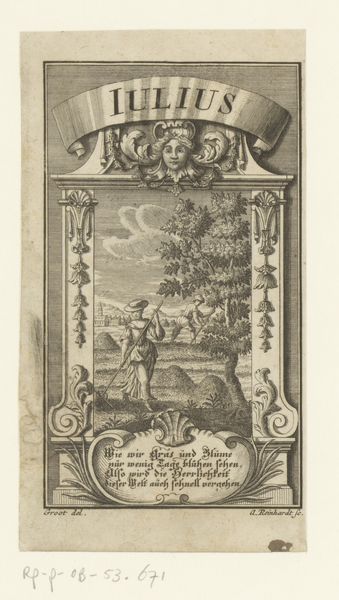
print, etching, engraving
#
dutch-golden-age
# print
#
etching
#
landscape
#
genre-painting
#
engraving
Dimensions: height 56 mm, width 98 mm
Copyright: Rijks Museum: Open Domain
Editor: This etching, "Company in a Wooded Setting," made around 1630 by Bartholomeus van Lochom, it’s quite detailed for a print! I’m intrigued by the depiction of this group – it seems like a very carefully constructed scene, but what do you make of it? Curator: Well, let's think about printmaking at this time. Etchings like this were essentially reproducible commodities. This allowed for the wider distribution of imagery, moving art beyond the patronage of the elite. Think about it – it brought genre scenes and landscapes into the homes of a growing middle class. Editor: So, it's not just about the aesthetic representation but also the accessibility of art through this medium? Curator: Exactly. The relatively inexpensive nature of prints compared to paintings fostered a new type of consumption. Consider also the labor involved – the artist, the engraver, the paper makers. It was a small-scale industry providing for a burgeoning art market. The title written below in elaborate calligraphy even suggests it's meant for a flower festival celebration of some kind. What are they really selling? And who is buying? These are key materialist questions to consider. Editor: I didn’t think about that. Seeing it as part of this network of production and consumption really changes how I understand it. Curator: Precisely. It makes us consider the societal impact, and how artistic production intertwines with economic and social structures. Editor: It’s amazing how focusing on the materials and production can open up a completely new interpretation of this work. Curator: Indeed. By understanding the material conditions of its creation and circulation, we gain a deeper insight into the world this image inhabited.
Comments
No comments
Be the first to comment and join the conversation on the ultimate creative platform.
